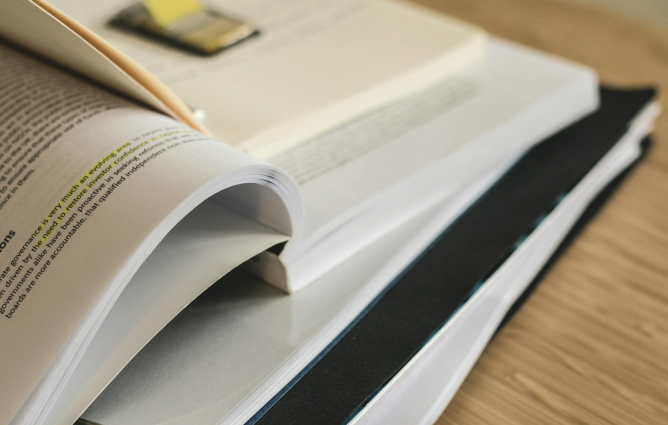
Acton Scholars is the leading high school research journal committed to publishing journals for high school students and adding wings to their careers. Our focus has always been towards providing high school students and other researchers with a chance to showcase their research work in front of a wider community and open up new opportunities for them in Olympiads, QuestBridge Scholarship, and Ivy League admissions. We offer you the opportunity to display your research work in one of the most highly rated journals. As an open-access journal, we offer wider access to your research work, which improves your odds of success compared to membership-only journals.

We are aware of the level of competition that high school students face in the modern competitive environment. This is where we focus on helping you excel in Science Olympiad, Math Olympiad, and Physics Olympiad, etc., and improve your Concord high school rating. Publishing your research work with us serves as a stepping-stone for success. Doing so would also improve your research skills and gain deep insights into research in the early stage of your academic life. This platform has been conceived with the idea of offering interactive sessions where you can interact with peers while and a chance to access their academic works.
We take pride in having been part of successful careers for hundreds of high school students who have secured Quest Bridge scholarships and Ivy League athletic scholarships. We bring out regular issues of our journal showcasing path-breaking research work that offers new insights into the ongoing research work at various high schools to help the student community pursue excellence. We have gained wider acceptance in the academic community thanks to the quality of research papers published in our journal.

understanding high school students who have completed or near completion of an original work of scholarship are invited to submit their high school journal here for publication in one of our journals. Like The Concord Review, publication in Acton Scholars journals is a highly selective high school research academic competition and averages under 8% for each journal. Due to the publication procedure’s high standards and competitive nature, publication connotes a substantial degree of academic excellence. As such, many of the students who were published in our journals have been accepted to the top US colleges ivy league admissions, including MIT, Caltech, Harvard, Stanford, Princeton. We also welcome research associated with the STEM Olympiads, e.g. Science Olympiad, Physics Olympiad, Math Olympiad. Many of our top published students have gone on to earn QuestBridge awards and QuestBridge scholarship.
Over the years, Acton Scholars have received hundreds of inquiries on how to write an influential research paper. We have put together a list of what constitutes a good research paper to help you get started.
Submerge yourself into the research process. After choosing your subject, you may find yourself overwhelmed with the amount of information you encounter. This is all part of the process. Our advice is to allow yourself to casually read about your subject without putting too much stress on what your direct line of action should be. Pay attention to what personally interests you and jot it down. If the subject does not hold your interest, you will have difficulty maintaining your audience’s attention. This is a good time for you to start formulating your thesis. Remember to keep track of your resources and take advantage of sites such as Google Scholar or online encyclopedias, almanacs, and databases. This will all be used in your bibliography later.
Your organizational skills are critical. We suggest while you discover new things about your subject, you use a spreadsheet to organize your idea neatly. Your jumbled thoughts will look much less daunting if you can see them in front of you. This will also help build your thesis statement. It’s important to have a strong thesis before you start writing. Think of it as your anchoring point to come back to if you feel like your paper is running away from you. Now it is time to start making an outline. This does not have to be set in stone. Your outline will most likely change as you begin to understand more about your subject. This is actually a good thing. It shows that you are learning and not stubborn in your ways. When creating the outline, use only the main points—no need to waste time getting too deeply involved yet. After you finished, run through it one more time to trim off the fat. Ask yourself is this necessary to put in my paper, or am I just trying to fill up space (trust us, we will be able to tell).
Now it’s time to jump in the thicket. Luckily the most challenging part is done. Now you can let yourself roam free with your ideas within each section. First, start with the introduction. The introduction is similar to your thesis, but with one significant difference, it explains WHY you are writing the paper. While the thesis tells your reader what the paper is about, the introduction will let them know what is the point of writing it. Make sure you start with an interesting opening sentence. We understand that this is an academic paper; however, that does not mean it needs to be dry and dull. With the rest of the introduction, you may choose to explain how you organized your approach. Also, you should let them know if this is an argumentative paper or an informative one.
Now it’s time for the body of the essay. This is where your outline will come in handy. Remember, you don’t need to stay married to it. It’s more of a guiding light for you, but sometimes those hidden dark hallways are where the most exciting things are discovered. You have probably collected a lot of sources in the beginning, but don’t let that control your paper. You don’t need to use all of them if they do not fit well. Trust your instinct; if it doesn’t feel right, it probably doesn’t belong. It also might help to remember the “rule of three” when writing your body. A lot of effective papers use this to support the point they are trying to get across. This technique has various usages centered around backing your points up with three facts or how to build up an argument. You could also think of how standup comedians write their jokes (set up, build the audience’s anticipation, punch line).
You have reached the end, and it’s time for the conclusion. Perhaps it all seems a bit chaotic and might feel like you have led your reader astray. This is your chance to check if that is true. Remember, everything comes down to the thesis. For the conclusion, briefly summarize your main points from each section of your body. You should then briefly explain why you believe these points. If you can’t, there must be something wrong, and you need to go back to your body and make some adjustments.
Reviewing, editing, and asking for help. We cannot advise enough how vital these last three steps are. We receive so many papers each year that are fantastic, but the authors did not do the proper citings or grammar checks. This will hurt your paper a lot because it looks like you don’t care that much. Use the many online tools available like Grammarly to help you. You might think that your paper looks perfect, but I guarantee there are mistakes that you missed. Think about it like going to a museum and seeing a million-dollar painting hung crooked on the wall. Also, show your paper to as many people as possible. Ask them for help no matter who it is. Every little bit helps. Teachers, friends, family, or any online community can help squeeze out all the holes you don’t see. Don’t get your feelings hurt when they tell you some parts don’t make sense. It’s all part of the process. Good luck!
If you are not sure which category your paper belongs to, submit under one category nearest to the subject matter and the editors will decide which journal to publish it in.


All journals, including open-access journals, receive publication fees once papers have been accepted for publication. They can range from a few hundred dollars to several thousand. For example, The Concord Review, arguably the most prestigious academic journal for high school students require a journal membership ranging from $70 to $150 to submit a paper.
Most “closed” journals also sell their journals to readers. Open-access journals do not receive payment from readers, just from authors. In order to support the costs of operations, Acton Scholars normally asks for a $100 publication fee from the author once accepted for publication. Because it is open-access, Acton Scholars does not require payment from its readership.
*To celebrate its relaunch in 2020, Acton Scholars will be waiving all publication fees for the duration of the year.
We thank the Dennett Foundation for making this possible.
Once you have put in hours of labor into research, your work deserves to be shared with a wider community. Unfortunately, hundreds of research works stay hidden behind paywalls in membership-only journals. They also limit your scope of getting peer-reviewed and helping other researchers in the future, which isn’t desirable for the students. This is where we at Acton Scholars encourage and welcome all high school students and other researchers to publish their research work on our platform, where we believe in offering an equal opportunity for all high school students.

Copyright 2023 | Academic journals